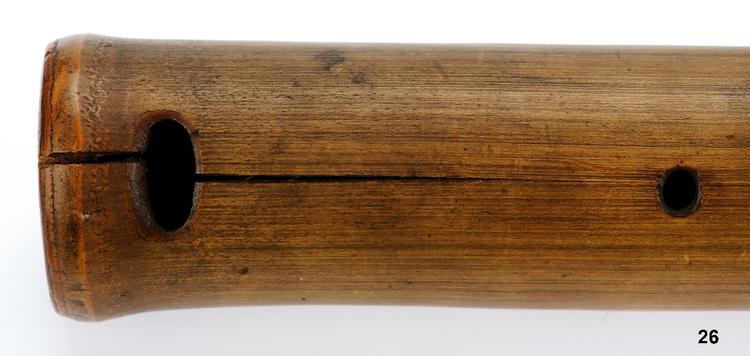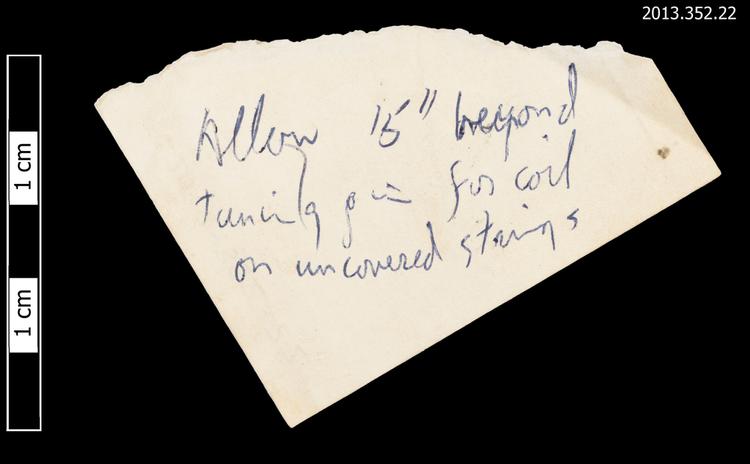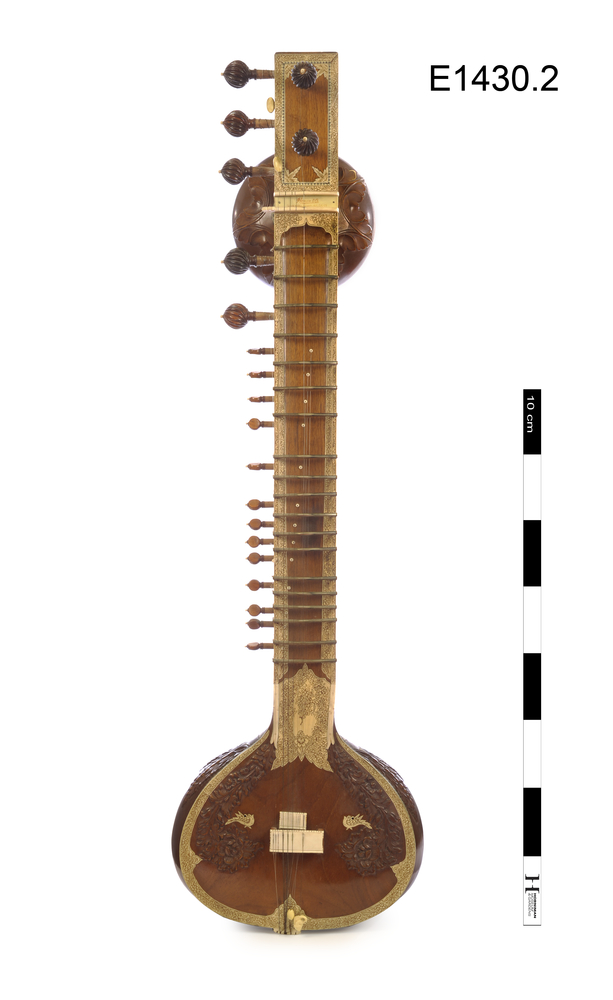
Bamboo Nose flute constructed from a single internode which is closed at the top and open at the bottom. The nose hole is oval in form and the flute has three other fingering holes –a treble hole just below the nose hole and two bass holes near the instrument's mouth. The instrument bears several circumferential rings of light and dark discolouration indicating the former presence of a complex coconut fibre cordage binding and the vivo formerly bore two collection labels which are also now missing. .As of 2012 the flute has two cracks running up from its mouth for approx. 114mm.
Vivo, nose Flute, Society Islands, Central Polynesia Although little known in the West, nose flutes have a fairly wide distribution: as well as an independent invention among some Central African cultures, they were played in the Philippines, parts of New Guinea, and throughout the whole of Polynesia from Fiji in the west to Hawaii in the northeast. This type from the Society Islands was known as a vivo. It was cut from a single internode of bamboo, closed at both ends. This was pierced through the upper side of the stem to form the breath hole, and a varying number of finger-holes (‘stops’) cut into the side. In general, vivo follow the Polynesia-wide pattern of two to four holes. This example possesses a moderate three stops. There were two major forms of Society Islands musical composition which the vivo was used to play: repetitious two-line songs known as pehe, and lengthy ballads of a historical or storytelling nature called ‘upa‘upa. Some musicians knew hundreds of different pieces. In one such ballad, it is mentioned that men who play the nose flute well will be almost irresistible to women. Society Islands flute players were generally members of the Arioi cult, and played in ensembles of two or three flautists and a similar number of drummers. The Arioi were an elevated class in Society Islands culture, professional performers in many senses: musically, choreographically, ritually and sexually. They were usually younger men and women of higher class birth, who had dedicated their lives to the pursuit of pleasure for themselves and others, and to the veneration of the god ‘Oro. Although the cult of ‘Oro was focused around the famous marae (open-air temple) of Taputapuatea on the island of Ra‘iatea, the Arioi were almost nomadic in practical terms, travelling from island to island, consuming the available surplus food in exchange for bringing the arts of pleasure, and the glorification of ‘Oro. With widespread Christian conversion and the collapse of the Arioi cult, musical performance went into decline and many ancient cultural forms were lost forever. Bamboo. Early 19th Century.

































































































































































































































































































































































































































































































































